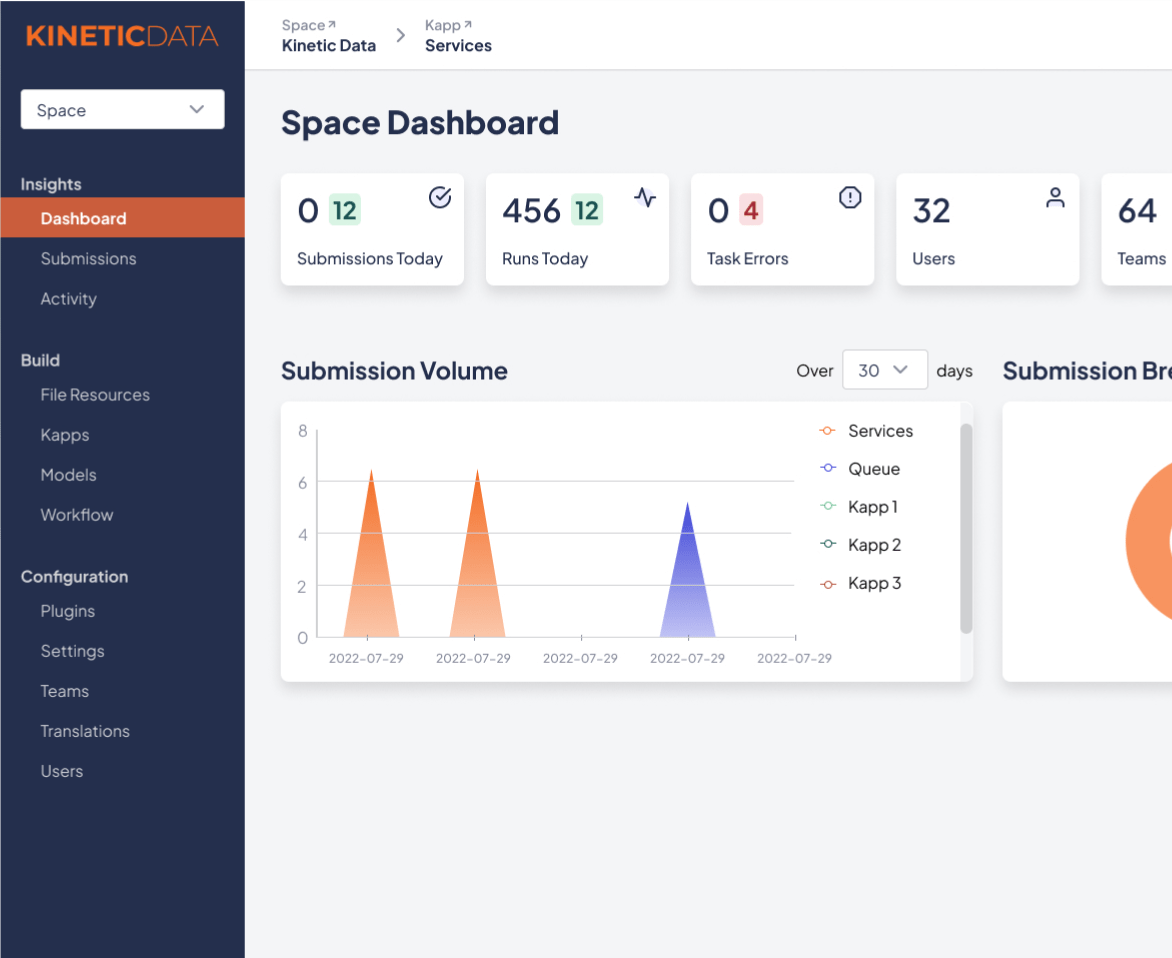Workflow engines are powerful—but invisible to users. Kinetic starts with the experience, then orchestrates across everything. That's the difference between building for developers and building for adoption.
Kinetic vs Camunda
What Is Camunda?
Camunda is a workflow and decision automation engine built on BPMN 2.0 standards. Once praised as the “developer’s BPM,” it has evolved into a complex ecosystem that demands significant engineering effort to deploy and maintain. What started as a lightweight open-source framework has become a commercial suite with layered components, shifting pricing models, and growing infrastructure requirements.
While powerful under the hood, Camunda remains deeply backend-focused. It offers no true experience layer—no portals, no dynamic forms, no intuitive user interfaces. Every interaction must be coded and integrated manually. For many organizations, that means months of setup before users ever see value. The engine runs, but adoption stalls. What’s billed as agility often feels like assembly—and the more you build, the heavier it gets.
Workflow Engines Reimagined
Kinetic keeps the orchestration power developers love about Camunda but surrounds it with everything enterprises need for adoption. It combines workflow automation with branded portals, intelligent forms, and governed integrations—all in one platform.
Instead of building front-end experiences and connectors from scratch, teams use Kinetic’s open architecture to orchestrate across systems while delivering a unified user experience. The outcome: faster deployment, easier change, and automation that employees actually use—not just engines that run in the background.
Kinetic vs Camunda
How does the Kinetic platform stack up against Camunda?
Focus
Camunda:
Process engine for developers; backend orchestration
With Kinetic:
Experience-first platform; orchestration + portals + forms out of the box
Experience Layer
Camunda:
None — you build your own UI/portal layer
With Kinetic:
Headless "Own the Glass" architecture with pre-built portal framework
Human-in-the-Loop
Camunda:
Requires custom UI development for user tasks and approvals
With Kinetic:
Built-in approval routing, notifications, escalations, and exception handling
Integration Approach
Camunda::
Flexible API-first, but you build the integration layer
With Kinetic:
Pre-built connectors + custom handlers + on-prem agents—framework included
Competition
Who are the other platforms in the Workflow Engine category?
How Kinetic compares: We don't compete on BPMN modeling elegance or process engine sophistication. We compete on complete solutions that deliver both powerful orchestration AND the user experiences that drive adoption. Kinetic gives you orchestration that rivals workflow engines while also providing the portal, forms, and integration layers they leave you to build.
Camunda
Open-source workflow engine, excellent for developers, requires significant UI/portal development.
Flowable
Similar to Camunda, strong BPMN capabilities, developer-focused, limited experience layer.
Temporal
Modern workflow engine for developers, excellent for microservices, purely backend-focused.
Stop building what should be included. Start orchestrating what matters.
